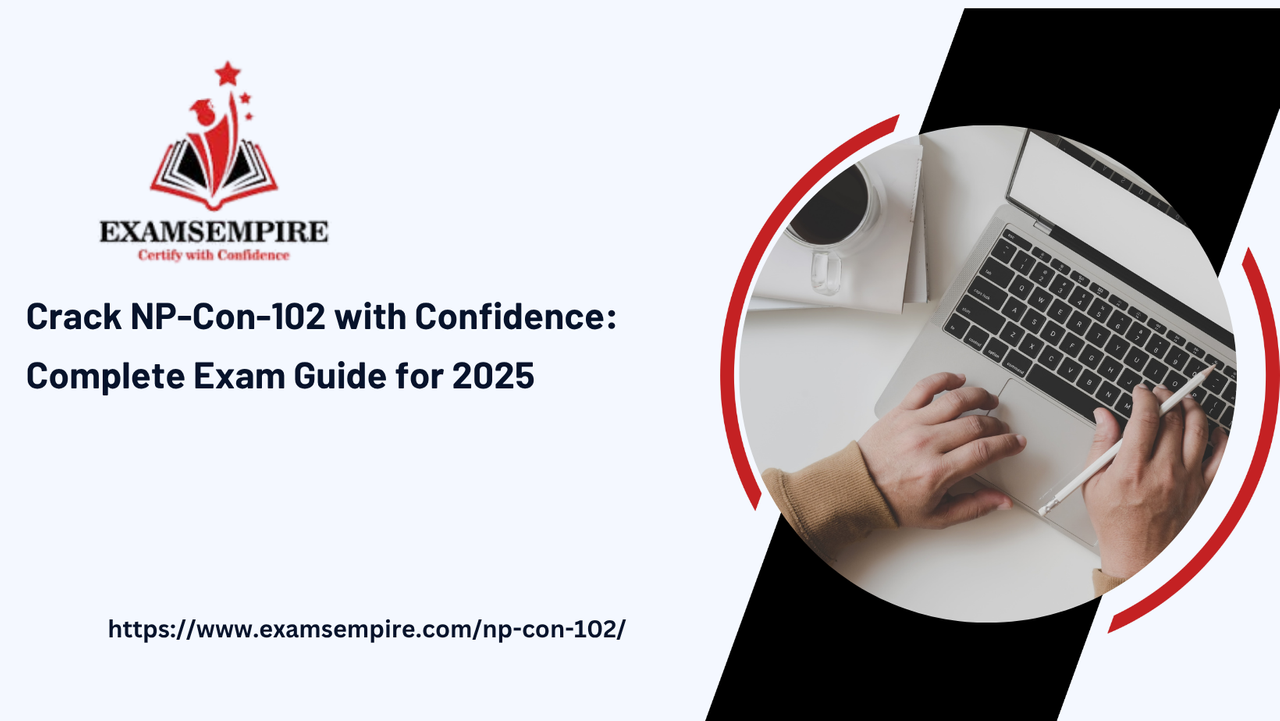If you’re planning to take the NP-Con-102 certification exam, you’re already on the right path to upgrading your professional profile and advancing your career. Whether you’re a student, IT professional, or tech enthusiast, the NP-Con-102 exam is designed to validate your foundational knowledge and practical understanding of network protocols and configuration.
What Is NP-Con-102?
NP-Con-102 (short for “Network Protocols & Configuration 102”) is a mid-level certification exam that focuses on network configuration concepts, protocols, and troubleshooting techniques. It’s often taken after an introductory-level exam (such as NP-Con-101 or equivalent foundational courses).
This certification is ideal for professionals who want to validate their understanding of:
- Network design and configuration
- TCP/IP and other protocol operations
- Subnetting and IP addressing
- Network services (DNS, DHCP, NAT)
- Routing and switching basics
- Network troubleshooting
This exam bridges the gap between theoretical knowledge and real-world network administration, making it essential for roles like:
- Network Technicians
- System Administrators
- Support Engineers
- IT Specialists
- Network Support Analysts

NP-Con-102 Exam Format
Before diving into study material, it’s important to understand the structure of the NP-Con-102 exam. While exact formats may vary depending on the issuing organization, the typical exam setup includes:
- Number of questions: 50–60
- Duration: 90 minutes
- Question types: Multiple choice, multiple select, drag and drop, scenario-based
- Passing score: Approximately 70%
- Difficulty: Intermediate
- Prerequisites: Foundational networking knowledge (NP-Con-101 or equivalent)
Exam Objectives and Topics
Here are the core topics that are typically covered in the NP-Con-102 exam:
1. Network Addressing and Subnetting
- IPv4 and IPv6 structure
- Subnet masks and CIDR
- Calculating usable IP addresses
- Private vs public addressing
2. TCP/IP Protocol Stack
- OSI model vs TCP/IP model
- Functions of each layer
- Protocols: TCP, UDP, ICMP, ARP, DNS
3. Routing and Switching Basics
- Static vs dynamic routing
- Routing protocols: RIP, OSPF, EIGRP
- Switch operations and VLANs
4. Network Services and Configuration
- DNS, DHCP, NAT, and PAT
- Configuring DNS servers
- Lease time and DHCP options
- Port forwarding and access control lists (ACLs)
5. Network Devices and Roles
- Routers, switches, firewalls, access points
- Configuration interfaces (CLI vs GUI)
- Layer 2 vs Layer 3 devices
6. Network Troubleshooting
- Ping and traceroute
- ipconfig/ifconfig/netstat
- Common issues (duplicate IPs, DNS failures)
- Tools and methods for identifying problems
How to Prepare for NP-Con-102
Step 1: Review the Official Exam Guide
Before anything else, obtain the official syllabus or blueprint. It outlines the exact skills and domains you’ll be tested on. Make sure you understand how each topic maps to your current knowledge.
Step 2: Learn the Theory
Resources for theoretical learning include:
- Networking textbooks
- Online learning platforms
- Official documentation and whitepapers
- Study notes and cheat sheets for subnetting and protocols
Focus on understanding why things work a certain way. For example, don’t just memorize port numbers — understand what service they represent and how they interact with other layers.
Step 3: Get Hands-On Practice
Use real or simulated labs to practice:
- Setting up routers and switches
- Creating subnets and assigning IP addresses
- Configuring DNS/DHCP servers
- Capturing and analyzing packets using Wireshark
- Testing connectivity and simulating outages
Hands-on practice helps reinforce your understanding and prepares you for real-world scenarios.
For more information visit us
https://www.examsempire.com/np-con-102
Step 4: Take Practice Exams
Mock tests and quizzes help you:
- Familiarize yourself with the question style
- Identify weak areas
- Improve time management
Time your practice sessions. Aim for at least two or three full-length mock exams before the actual test.
Step 5: Join Forums or Study Groups
Platforms like Reddit, Discord, and LinkedIn groups can connect you with others preparing for the exam. Ask questions, discuss concepts, and stay motivated.
Exam-Day Tips
- Arrive early or test your remote setup in advance
- Read each question carefully — don’t rush
- Use the process of elimination to narrow down choices
- Mark difficult questions and come back if needed
- Keep an eye on the clock to maintain a steady pace
Common Mistakes to Avoid
- Skipping subnetting practice
- Subnetting is one of the most commonly tested — and most often failed — topics. Practice until it’s second nature.
- Ignoring troubleshooting tools
- Know how to use basic commands and interpret their output.
- Over-relying on brain dumps
- Dumps may help you recognize questions, but they don’t build true understanding. Rely on real study and hands-on experience.
- Not simulating configurations
- Reading about network services is helpful, but actually configuring and testing them is essential.
After the Exam: What’s Next?
Once you pass the NP-Con-102 exam, you’ve demonstrated a valuable level of technical knowledge. You can:
- Apply for roles like Network Support Technician or Junior Systems Administrator
- Continue to more advanced networking certifications
- Specialize in areas like security, cloud networking, or virtualization
Make sure to update your résumé, portfolio, and online profiles. Certification can open the door to new job opportunities and higher earning potential.
Final Thoughts
The NP-Con-102 pdf dumps certification is a solid benchmark for intermediate network professionals. It ensures that you not only understand theory but can also apply it in practical scenarios. It covers key areas such as subnetting, routing protocols, DNS/DHCP configuration, and basic troubleshooting.
With a focused study plan, real lab practice, and consistent revision, you can pass this exam confidently and build a strong foundation for your IT career.
Start preparing early, be consistent, and trust the process — success is entirely within your reach.


